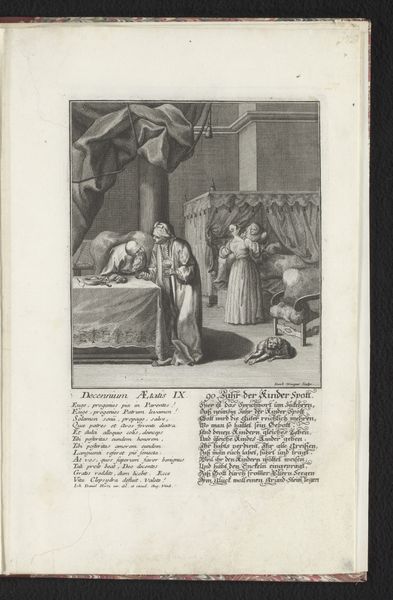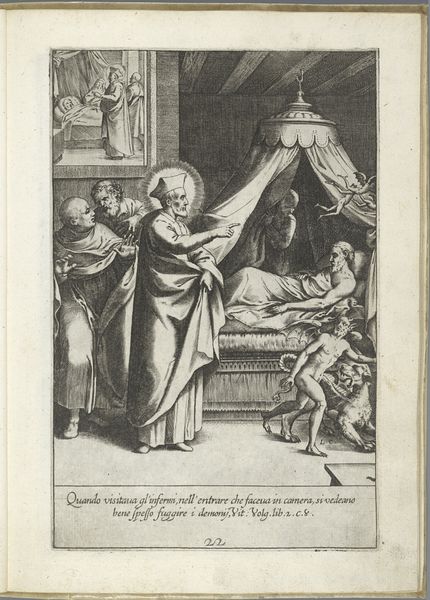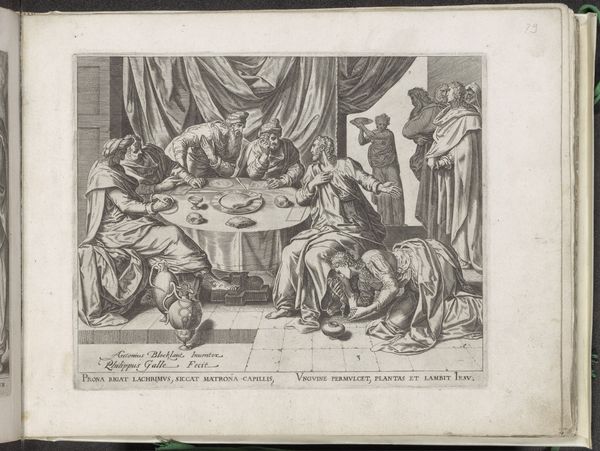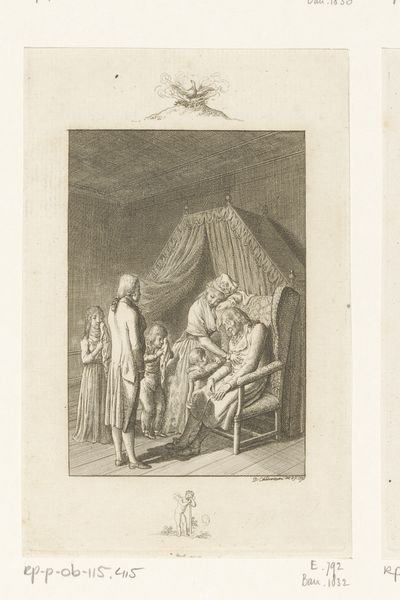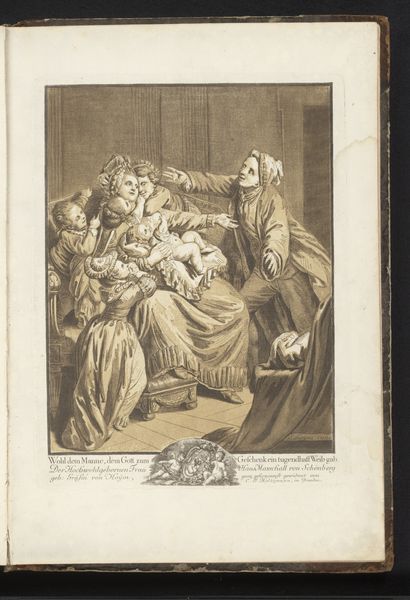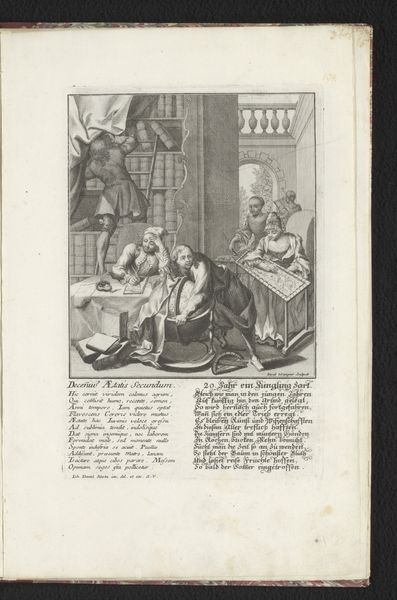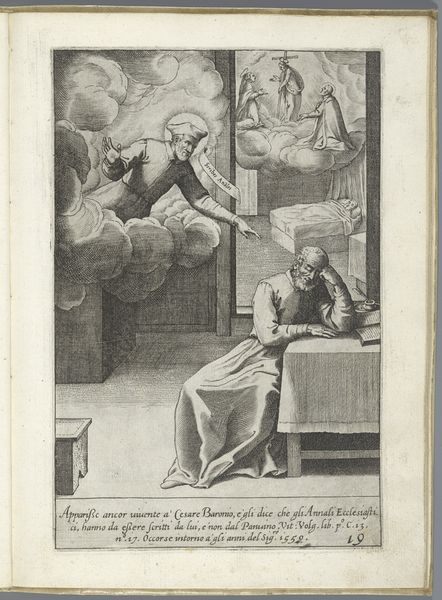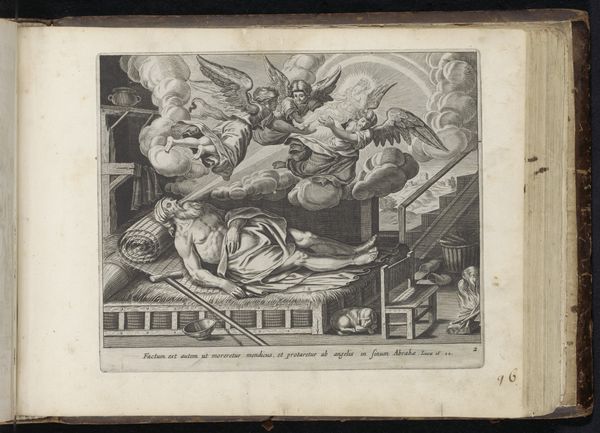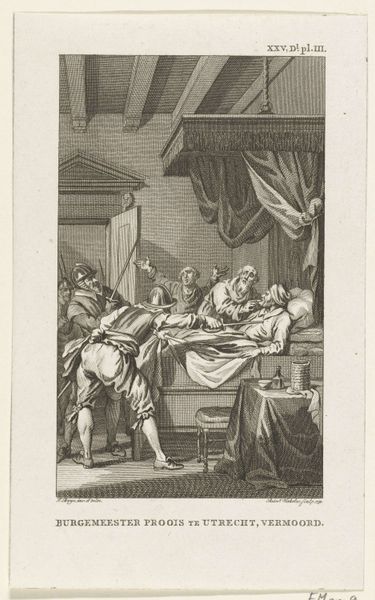
print, engraving
#
narrative-art
#
baroque
# print
#
figuration
#
history-painting
#
engraving
Dimensions: height 228 mm, width 150 mm
Copyright: Rijks Museum: Open Domain
Curator: Here we have "Filippo Neri Sees Two Angels" by Luca Ciamberlano, created between 1630 and 1641. This Baroque engraving is currently housed in the Rijksmuseum. The image depicts a saint in what appears to be a sick room receiving a divine vision. What are your initial thoughts on this work? Editor: Well, I'm immediately struck by the contrast of textures, how Ciamberlano uses cross-hatching to suggest everything from the coarse cloth of the kneeling figure’s trousers to the ethereal softness of the angels' wings. It is interesting to examine the layering, even the lines making up their facial figures. Curator: Precisely! And the composition is ingeniously arranged, isn't it? Notice how the artist uses the horizontal line of the bed to divide the earthly and celestial realms. Above, we have the dynamism of the angels; below, the solemn stillness of the deathbed scene. The implied verticality draws the eye upward, creating a visual ascent. Editor: I think it is critical to consider what type of press and plate were required to create the levels of shading on display. Also the acidic chemical processing is clearly very nuanced. What level of artisanal skill do we imagine went into the process? And, how are these skilled artisans valued by their contemporaries? Curator: Good point. We must acknowledge the craftsmanship involved. It seems the contrast emphasizes both the subject of transcendence but also that the hand of the artist, guided by their own creative spirit, produced the engraving itself. Editor: This connects well to my broader view that it's equally important to look beyond the formal aspects and consider this print as a produced commodity in Baroque society. This print, in its multiple instances, connects a message to multiple consumers of this narrative. Curator: Certainly. The narrative of Filippo Neri’s vision is effectively conveyed through the precise linework. It has successfully triggered contemplation within the confines of its own artistic language. Editor: Ultimately, I see a compelling dialogue between spiritual storytelling and the tangible realities of material production. Both facets shape how we experience and interpret this Baroque print.
Comments
No comments
Be the first to comment and join the conversation on the ultimate creative platform.

